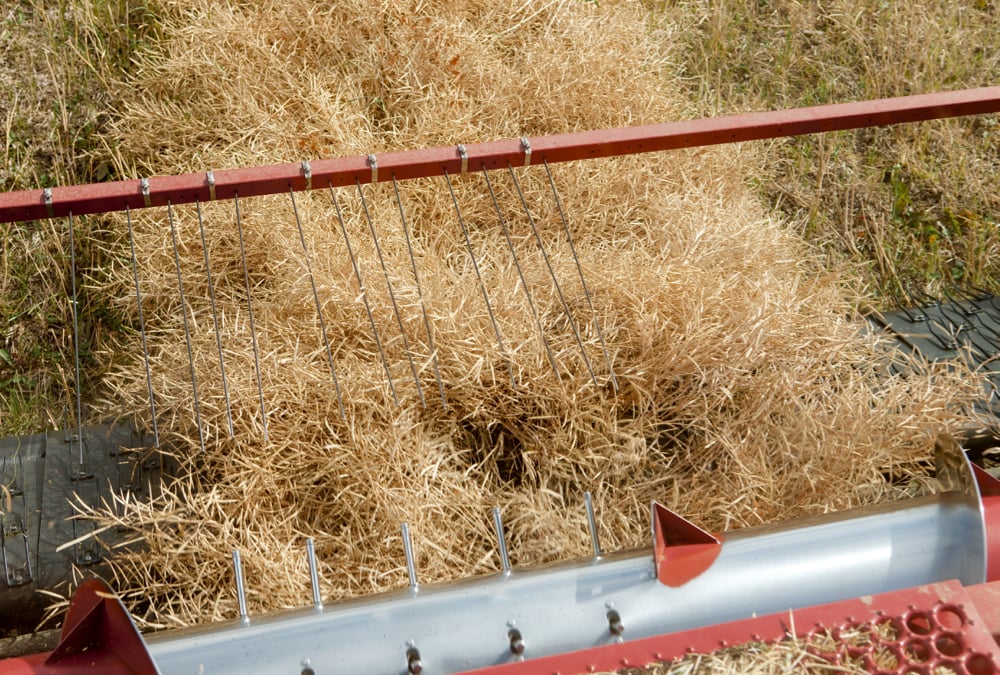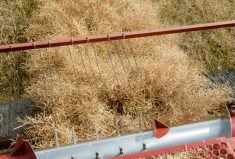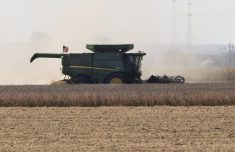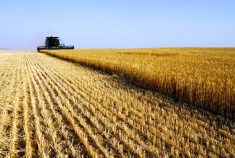Maple Leaf Foods has no plans to build hog barns in Manitoba, even though the company needs more pigs for its processing plant in Brandon.
For several months the Brandon plant has been operating well below its capacity of 90,000 to 95,000 hogs per week.
Manitoba farmers, Hutterite colonies and companies aren’t producing enough pigs to supply the Brandon plant and the Hylife slaughter plant in Neepawa, Man. Consequently, Maple Leaf has been slaughtering 65,000 to 70,000 pigs per week.
Maple Leaf owns and operates dozens of hog barns in Manitoba because two years ago it purchased Puratone, one of the largest hog production companies in Canada.
Read Also

Alberta harvest wrapping up: report
Harvest operations advanced to 96 per cent complete in Alberta as of Oct. 7, with only a few late-seeded cereal and canola fields remaining, according to the latest provincial crop report.
Rory McAlpine, vice-president of government and industry relations, said the hog shortage is concerning but Maple Leaf is not building new barns.
“Maple Leaf has diminished its ownership of hogs in the past several years and has confined our ownership just to hogs in Manitoba,” he said. “In terms of our business model, we have no particular interest in investing more of our own capital in hog production. But we are certainly keen to see supply grow.”
McAlpine said Maple Leaf is focused on the higher value side of the meat business: making prepared meat products and selling its branded ham, bacon and other proteins into the retail market.
Manitoba farmers have built only three or four pig barns since 2007. Over the same period, producers in Iowa and Minnesota have built dozens if not hundreds of barns.
Karl Kynoch, Manitoba Pork Council chair, said in September that the provincial government refuses to alter its onerous manure treatment regulations for hog barns. The regulations require barns to have an anaerobic digester to treat manure. The province says it established the rules to protect the water quality of Lake Winnipeg.
Manitoba hog producers have said the regulations are too costly because an anaerobic digester for a small pig barn may cost $1 million.
Manitoba Pork proposed a cheaper option, building additional earthen storage structures, but Kynoch said the province rejected that proposal and rebuffed an idea to inject pig manure into the soil.
McAlpine said the province’s reluctance to modify the regulations is worrisome.
“The regulatory environment is not positive … and the cost of anaerobic digestion is prohibitive.”
McAlpine said managing the amount of phosphorus applied to the soil should be the overall goal of manure regulations. Manitoba’s hog industry is concentrated in the southeastern corner of the province, but there is plenty of room for expansion around Brandon, he said.
“Our plant is in the west and that’s where we can see lots of potential. There are lots of soils that are nutrient deficient, there’s lots of land and given the proximity to our plant and Hylife’s plant in Neepawa, that’s absolutely where future barn replacement could occur.”
With stronger hog prices and lower feed costs hog production is once again profitable, so farmers and businesses should be considering the opportunity, he said.
“The profits are there now. There’s every reason to be reinvesting. There are many grain farmers in Manitoba that are sitting on pretty healthy cash balances, that potentially may be looking a diversifying and investing in livestock.”
If Manitoba can’t sort out its manure management regulations, Maple Leaf may need to rely on Saskatchewan and possibly North Dakota for additional hog supply.
“There’s also the prospect of new investment in Saskatchewan,” McAlpine said. “If it means securing more hogs from across the border in Saskatchewan … that would also be quite good for us.”
Manitoba’s hog industry, by the numbers:
· The number of Manitoba sites producing pigs has declined by 33 percent over the last seven years.
· Total production hasn’t dropped significantly in Manitoba because the number of pigs per farm has increased from 2,500 in 2006 to much more than 4,000 last year.
· The province produced 4.684 million slaughter hogs last year, down from 5.349 million in 2007.
· There are 315,400 sows on farms this year, down from 369,300 in 2007.
· The Maple Leaf Foods plant in Brandon has a capacity of 4.5 million hogs a year.
· The Hylife plant in Neepawa has a capacity of 1.4 million hogs.
· The two plants operated at 85 percent of capacity last year. Comparable American plants operate at 97 percent capacity.
· Hog slaughter peaked at 5.57 million in 2012 but dropped to 5.43 million last year.
– Source: University of Manitoba’s department of agribusiness and agricultural economics

















